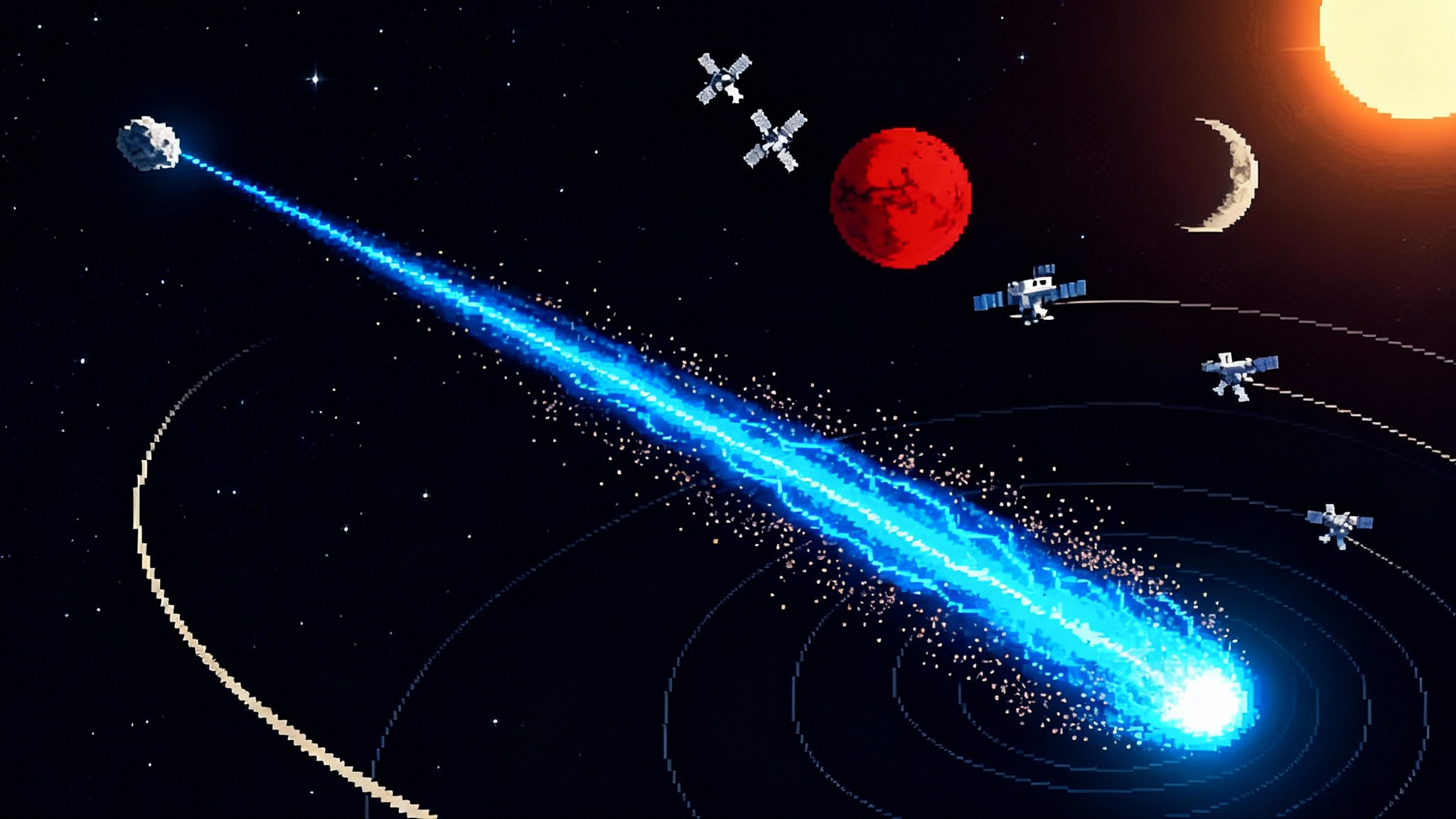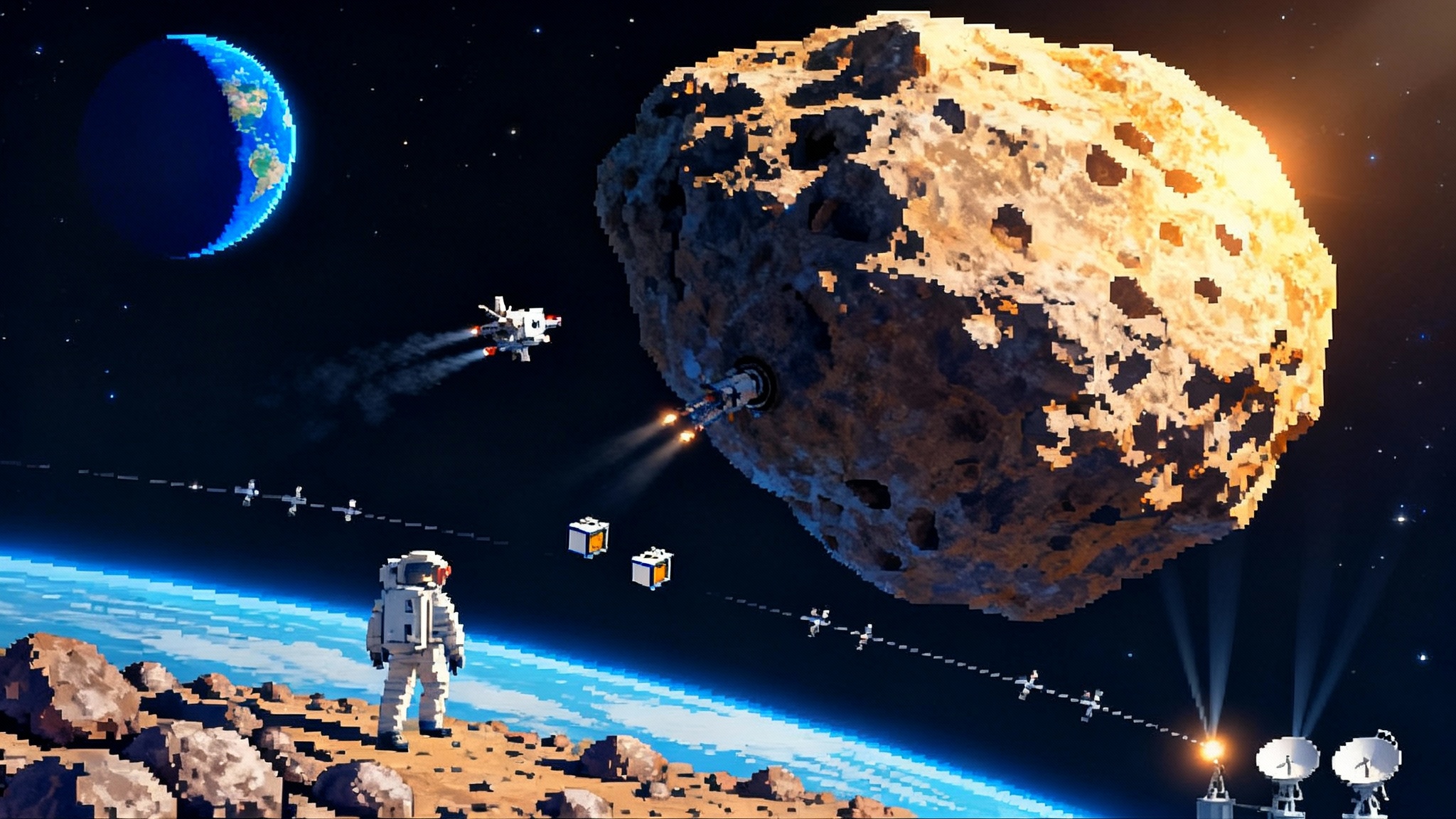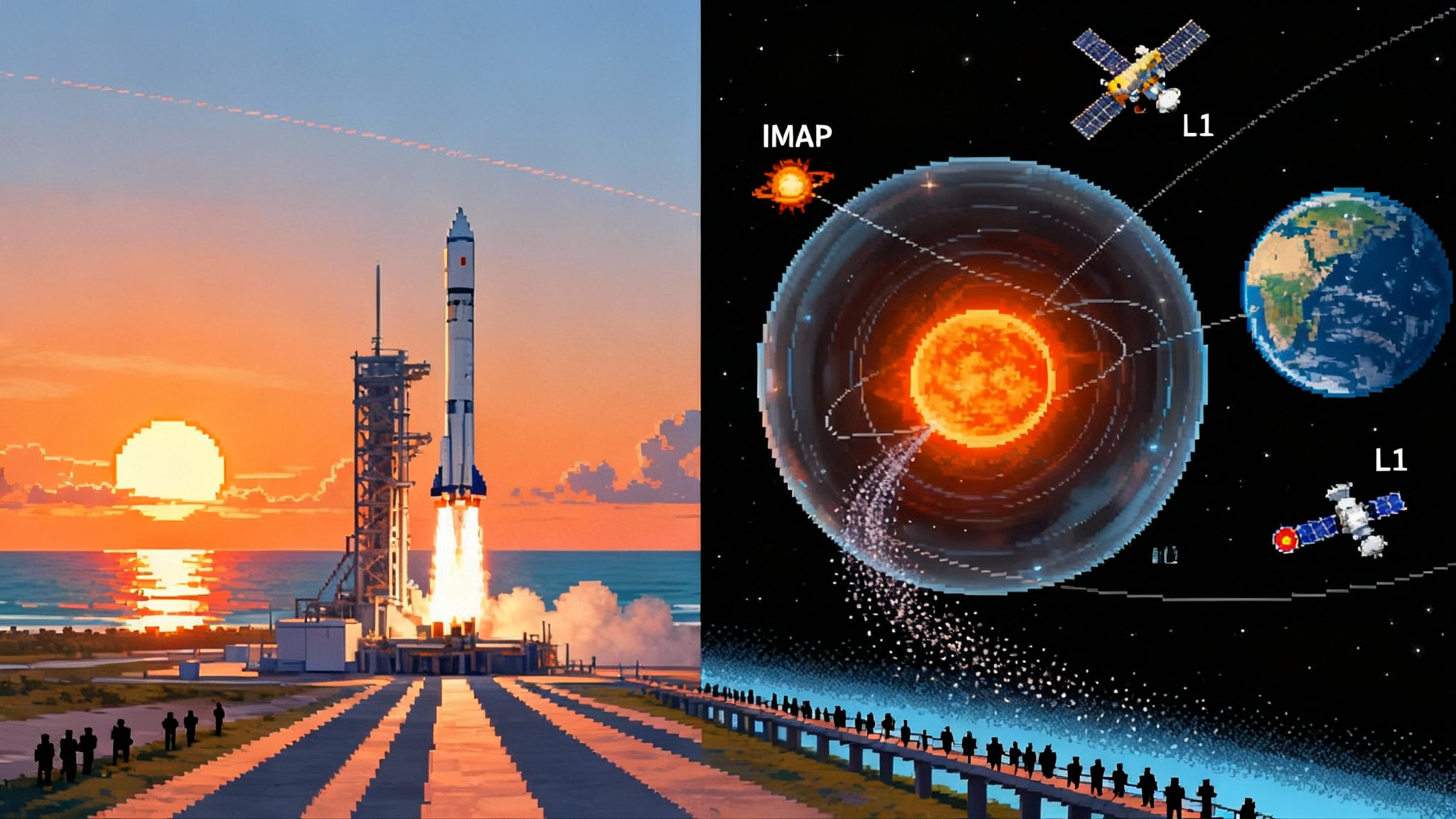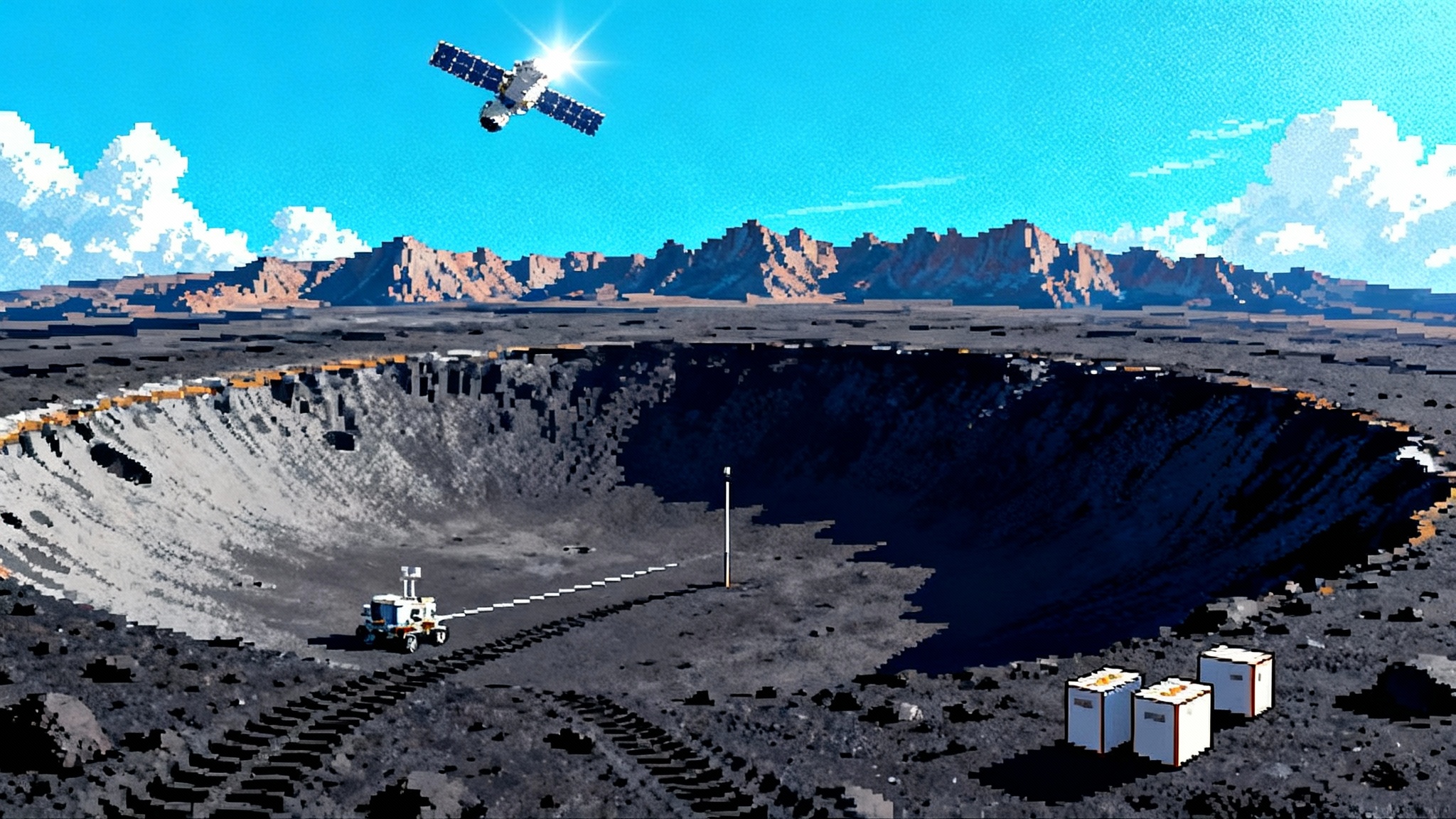Chang’e‑6 farside samples are steering the next lunar decade
Four landmark 2025 studies from Chang'e-6's first farside samples upend assumptions about lunar water, volcanism, magnetism, and mantle temperature, and they reset the next decade of landing sites, ISRU, and radio astronomy.

The Moon we thought we knew just changed
In 2025, four papers built from Chang'e-6's first-ever farside samples turned long-standing lunar assumptions into new homework. The basalt fragments scooped from the South Pole–Aitken basin came back with a message that is both precise and disruptive. The farside mantle looks drier than the nearside's. Volcanism on the farside ran far longer than many models predicted. The Moon's magnetic field did not simply fade; it flickered back. And the farside mantle formed and cooled at lower temperatures than its nearside counterpart. These are not trivia points. They rearrange the map for the next ten years of landing-site choices, resource bets, and even where we build the first truly quiet observatories for low-frequency radio astronomy.
Four results that reset lunar geology
1) A drier farside mantle
The first headline is water, or the lack of it. By analyzing water in apatite and melt inclusions from Chang'e-6 basalts, researchers estimated the farside mantle source to contain only about 1 to 1.5 micrograms of water per gram. That is a record-low estimate for lunar mantle material and significantly below many nearside inferences. The simplest mental picture is a sponge that never soaked up much in the first place. The farside mantle appears inherently poor in volatiles, consistent with lower concentrations of incompatible elements under the South Pole–Aitken basin. If you want the technical backbone, see the Nature paper on farside water.
Why it matters: surface frost at the poles is a different reservoir than interior water. These results do not erase the possibility of ice in permanently shadowed regions, but they do warn planners not to assume widespread interior water release or volatile-rich pyroclastics on the farside. For site selection, it shifts the risk calculus toward polar cold traps and away from farside interior outgassing as a supply.
2) Billion-year volcanism on the farside
Chang'e-6 pinned down two distinct volcanic episodes on the farside, with a younger phase at about 2.8 billion years ago and an older one near 4.2 billion years. That is at least a 1.4 billion year window of activity. Think of a stove burner that was set lower than the nearside's but stayed on for far longer than expected. These ages anchor models with real rock, and they argue that the farside was not a static highlands museum; it evolved.
Why it matters: extended volcanism without abundant heat-producing elements implies efficient ways to move and extract heat locally. For the 2030s, that strengthens the case for sampling multiple farside basalt provinces rather than treating the region as geologically uniform. It also raises the odds that farside basalts record unique mantle processes worth targeted sample return.
3) A magnetic field that rebounded
Paleomagnetic measurements on the farside fragments suggest a resurgence in field strength around 2.8 billion years ago after an earlier decline. The lunar dynamo did not just slide downhill; it pulsed. The plausible drivers include precession-driven core motions or heat flow spikes after large impacts. In everyday terms, the Moon's core flickered like a city's power grid during a storm, on for a while, then dim, then briefly brighter again.
Why it matters: a stop-and-go dynamo changes how we interpret radiation exposure in ancient regolith layers and how we time big thermal events in the interior. For missions that want to use buried paleoregolith as an archive of solar wind and galactic cosmic rays, the history of shielding from a lunar magnetosphere is not a simple line.
4) A cooler farside interior
Mineral thermometry indicates the Chang'e-6 basalts crystallized at roughly 1,100 degrees Celsius, about 100 degrees cooler than similar-age nearside basalts. That difference points to fewer heat-producing elements such as uranium, thorium, and potassium on the farside. For a clear summary of the temperature gap and method, see the Nature Geoscience cooler farside mantle.
Why it matters: cooler mantle, less internal heat, and fewer incompatible elements together explain the farside's thicker crust and sparser mare basalts. They also tell surface planners to expect harder, colder ground in many farside locales and to plan power and thermal systems accordingly.
How the science steers where we land next
Mission goals decide landing sites. These results change those goals in three concrete ways.
- If you want water for life support and propellant: the top targets remain polar cold traps rather than interior-outgassing terrains. This boosts the value of sites with line-of-sight access to permanently shadowed regions, reliable sunlight on adjacent ridges for power, and terrain that supports short commutes between sunlit camp and cold trap.
- If you want mantle truths: farside mare units and South Pole–Aitken basin ejecta become premier stops, because they tap a cooler, volatile-poor mantle with a distinct history. Sampling across both hemispheres is now essential, not a nice-to-have.
- If you want ancient time capsules: locations with layered regolith and access to buried paleoregolith will be more valuable if we can tie them to episodes in the on-off dynamo. That means pairing geology with magnetometry and dating tools on site.
For Artemis, this science nudges the south polar shortlist toward ridges and massifs that combine access to shadowed hydrogen signals and varied lithologies. For the International Lunar Research Station, it sharpens a strategic split. Early ILRS build-outs can still focus on south polar infrastructure, but complementary farside sorties to South Pole–Aitken basaltic patches will deliver the clearest dividends per kilogram of sample.
ISRU bets: what changes, what does not
- Water supply: the farside mantle's dryness is a red flag against relying on endogenous water at farside stations. The safer bet is still exogenous polar ice. That pushes architectures toward power-rich, short-haul operations at cold-trap rims and toward proven prospecting methods such as neutron spectroscopy, near-infrared mapping, and ice coring with heated drills. It also favors robust cryogenic storage and dust-tolerant plumbing over large-scale water extraction from regolith beyond shadowed craters.
- Oxygen and metals: nothing in the Chang'e-6 results weakens oxygen-from-regolith methods such as molten regolith electrolysis or hydrogen reduction of ilmenite. Both hemispheres remain oxygen-rich if you bring enough power. The farside's cooler, less KREEP-rich rocks reduce some power-system radioactivity concerns and may slightly simplify thermal management, but the dominant variable is still watts per kilogram.
- Heat and power: cooler mantle means colder nights and potentially harder thermal cycles for equipment on the farside. Designs should lean into radiators, heaters, and energy storage sized for longer dark periods, especially for farside stations that cannot count on continuous relay support for solar power scheduling.
The farside radio rush is now a plan, not a pitch
The farside is the only natural radio quiet zone in the inner solar system. With the Chang'e-6 geology telling us the farside is colder and less KREEP-rich, the site case for low-frequency radio is even stronger: fewer local heat sources, fewer human assets to generate interference in the early years, and a stable terrain record. The near-term path is clear. NASA and the Department of Energy are flying LuSEE-Night to the farside on a commercial Moon lander in 2025 to sample the 0.1 to 50 megahertz sky during local night, with an orbiter relay to get the data home. If it works, it graduates the concept from slide deck to dataset. As communications improve, deep-space laser links could move more data from farside arrays without adding radio noise. The follow-ons are arrays that unspool lightweight dipoles over kilometers of terrain. By the early 2030s, farside observatories could be the place where the first statistically persuasive constraints on cosmic Dark Ages radio signals are made, paired with Euclid's dark-universe map for cross-checks.
A realistic 2026–2035 roadmap that acts on this geology
Below is a focused plan that assumes current schedules slide within normal bounds but that the science stays the driver. It blends government and commercial assets because that is how this decade will actually get flown.
-
2026
- Artemis II flies a crewed lunar loop to validate life support, navigation, and deep-space comms for later surface sorties. Treat this as the last rehearsal to lock landing-site power and lighting windows.
- LuSEE-Night lands on the farside with a relay in lunar orbit. Goal: demonstrate low-frequency radio observations through a full lunar night and return a clean spectrum survey that informs array siting.
- China launches Chang'e-7 to the south pole to scout volatiles with an orbiter, lander, and hopper, refining maps of accessible ice.
-
2027
- Artemis III targets a south polar ridge or massif with access to permanently shadowed terrain within traversing range. Primary objectives: sample sunlit-shadowed interfaces, ground-truth hydrogen maps, and return core samples for ice microstructure studies. Include a portable magnetometer to probe buried layers against the dynamo rebound timeline.
- A commercial polar rover delivery, if funded and ready, focuses on drilling and resource handling demonstrations at a shadowed site pre-surveyed by orbital neutron and thermal data. Design to share data formats with both Artemis and ILRS.
-
2028
- Artemis IV builds out the Gateway segment and delivers a heavier geophysics package for later surface use. Parallel tasking: an Artemis-supported uncrewed cargo lander stages a modular drill and cryogenic storage test at a shadowed-rim pair site.
- Chang'e-8 arrives to test in-situ resource use at the south pole. Make at least one joint protocol with Artemis science teams on sample metadata and drilling logs so farside and nearside data can be co-modeled.
-
2029–2030
- Artemis V flies with a second human lander provider and returns to a new polar region. Science: contrast ice grain size, sublimation rates, and regolith mechanics across two polar terrains. Engineering: demonstrate a two-week power and thermal cycle without cargo resupply.
- China targets the first crewed landing near the south pole by 2030. Joint opportunity: exchange sample splits tied to the farside-nearside mantle dichotomy, even if the crews never meet on the surface.
- Radio astronomy scales up. A pathfinder array of dozens to hundreds of antennas deploys on the farside to test interferometry, time synchronization, and dust resilience.
-
2031–2033
- Begin farside sample return campaigns beyond South Pole–Aitken's first site, aiming at distinct basalt units. Objective: map how ultra-depleted mantle chemistry varies laterally and with depth. Bring back oriented cores for paleomagnetism.
- Mature polar resource operations from demonstration to routine: ice mining at kilogram-per-sol scales, oxygen production that supports contingency life support, and water purification to propellant-grade standards.
-
2034–2035
- ILRS basic station achieves continuous crew-tended operations at the south pole with reliable relay and power. Co-develop standards for cryogenic handling, dust control, and radio quiet protocols that protect farside science.
- A square-kilometer-class low-frequency radio array on the farside begins multi-season observing. First long integrations hunt the global Dark Ages signal while also surveying the Sun's low-frequency weather in a way Earth cannot.
What program managers and engineers should do now
- Lock site selection criteria to mission outcomes, not slogans. If the goal is resources, prioritize polar lighting geometry, traverse safety, and verified hydrogen signals over public-relations craters. If the goal is mantle science, send a sample return to a South Pole–Aitken basalt unit early.
- Treat farside operations as a power and comms problem first. Build relay capacity and energy storage into every farside concept. Design for long dark cycles and cold starts.
- Plan for two supply chains for water. One chain delivers from polar ice. The second is contingency: regenerative water recycling sized for multi-week droughts in ice delivery, plus oxygen-from-regolith to backstop life support.
- Standardize science metadata. Require common time stamps, drilling logs, and field context photos across Artemis, ILRS, and commercial deliveries so the Chang'e-6 framework can be extended coherently.
- Protect the radio quiet. Write and adopt farside radio rules now: frequency allocations, quiet hours during lunar night, and electromagnetic compatibility limits for rovers and power systems. The first violations will be accidental unless the rules are visible, simple, and enforced.
The big picture, in plain terms
Chang'e-6 did not just add facts; it added constraints. The farside mantle is drier, which raises the value of proven polar ice. The farside interior ran cooler, which explains its crust and its quiet plains. Volcanism lasted for a very long time, which means there is more to learn from sampling more places. And the Moon's magnetic field pulsed late, which tweaks how we read the ancient radiation record. If we act on those constraints, the 2026–2035 lunar decade can be more than a race. It can be a coordinated build, where south polar bases learn to live off ice, farside expeditions answer deep questions about planetary interiors, and a radio telescope listens to the universe from the quietest backyard in the inner solar system. That would be a worthy way to turn a few grams of farside basalt into a blueprint for the Moon we will actually use.








